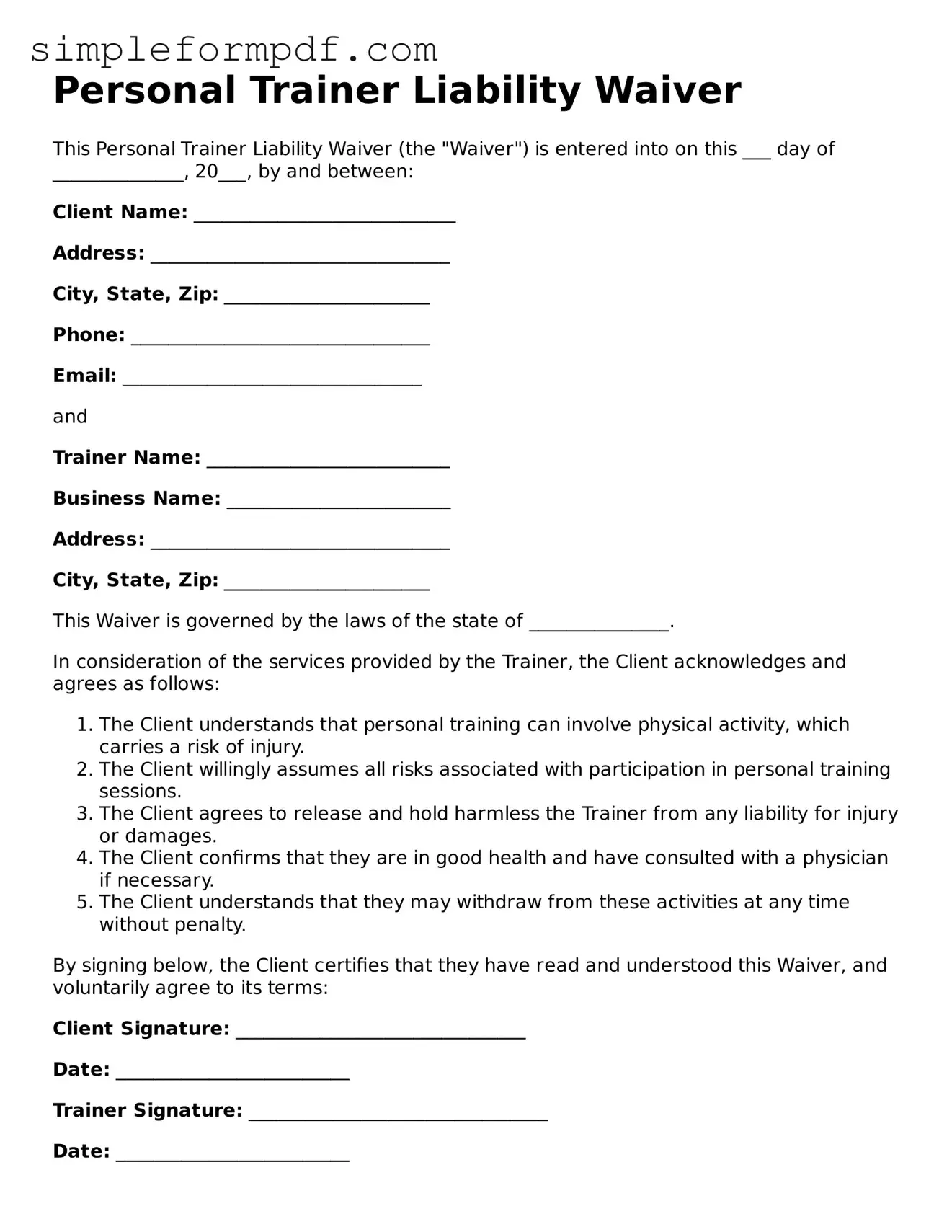Personal Trainer Liability Waiver
This Personal Trainer Liability Waiver (the "Waiver") is entered into on this ___ day of ______________, 20___, by and between:
Client Name: ____________________________
Address: ________________________________
City, State, Zip: ______________________
Phone: ________________________________
Email: ________________________________
and
Trainer Name: __________________________
Business Name: ________________________
Address: ________________________________
City, State, Zip: ______________________
This Waiver is governed by the laws of the state of _______________.
In consideration of the services provided by the Trainer, the Client acknowledges and agrees as follows:
- The Client understands that personal training can involve physical activity, which carries a risk of injury.
- The Client willingly assumes all risks associated with participation in personal training sessions.
- The Client agrees to release and hold harmless the Trainer from any liability for injury or damages.
- The Client confirms that they are in good health and have consulted with a physician if necessary.
- The Client understands that they may withdraw from these activities at any time without penalty.
By signing below, the Client certifies that they have read and understood this Waiver, and voluntarily agree to its terms:
Client Signature: _______________________________
Date: _________________________
Trainer Signature: ________________________________
Date: _________________________
